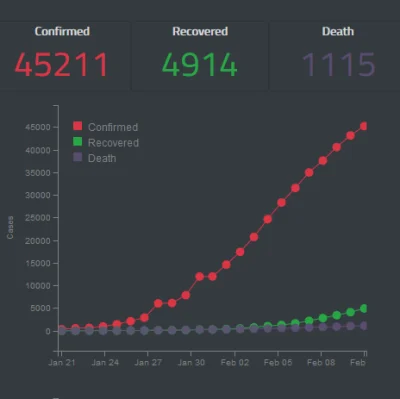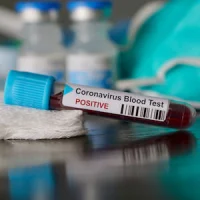On 11 February, the World Health Organization (WHO) named the novel coronavirus, previously referred to as 2019-nCoV, COVID-19, which stands for ‘coronavirus disease 2019.’
The organisation underlined that it was careful to find a name
without stigma, ie one that “did not refer to a geographical location, an
animal, or an individual or group of people.” It followed best practices
for naming of new human infectious diseases developed in consultation and
collaboration with the World Organisation for Animal Health (OIE) and the Food
and Agriculture Organization of the United Nations (FAO).
You may also like: Coronavirus 2019-nCoV Continues to Spread
WHO is working with Beijing to prepare an international mission, which will look into a variety of issues, from the virus’s characteristics to public health response measures China put in place.
Latest Figures
The latest available situation report from WHO (11 February) shows 43,103 confirmed cases globally, of which 2,560 new. Specifically, in China there are 42,708 confirmed cases. Of those 7,333 are estimated to be severe. 1,017 deaths have been recorded in China. Elsewhere there are 395 confirmed cases in 24 countries with one death. WHO’s risk assessment is ‘very high’ for China and ‘high’ for regional and global levels.
The latest WHO situation reports can be found here.
To facilitate understanding of where and how many people were infected, University
of Washington geographer Bo Zhao has created
an interactive map of
the novel coronavirus, which updates every few hours with data from the Centers
for Disease Control and Prevention, the World Health Organization, the People's
Republic of China, and other government agencies, including those in Hong Kong,
Macau and Taiwan. Users can zoom in on various countries and see the numbers of
cases, recoveries and deaths, as well as trends over time. Zhao also plans to
add county-level totals from China, and state and provincial totals from the U.S
and Canada, respectively.
In the
meantime, China has launched
an app that allows people to check whether they have been at risk of catching
the coronavirus. The 'close contact detector' tells users if they have been
near a person who has been confirmed or suspected of having the virus. Another technological
measure has been the deployment
of dronesto press people into donning protective facemasks.
Also, the
country has ‘removed’
several senior officials over their handling of the coronavirus outbreak, among
them are the party secretary for the Hubei Health Commission, the head of the
commission and the deputy director of the local Red Cross.
WHO Warns of ‘Infodemic’
In an interview with Reuters, Zhong Nanshan, an epidemiologist known for combating the SARS epidemic in 2003 and the China’s government senior medical adviser, assumed that the outbreak would hit a peak in China in middle or late February and might be over by April.
WHO, however, urges caution when interpreting new
information on cases of COVID-19 as the data currently available is
insufficient for a proper understanding of how the virus works and acts in
humans. "It seems people want to accelerate the infodemic and not contain
the epidemic," said Dr Michael Ryan,
head of the WHO's Health Emergencies Programme. "We need to be very
careful with throwing around figures, speculating or scaring people.”
COVID-2019 Genome Online
The browser team UC Santa Cruz Genomics Institute has posted the complete genome of the COVID-2019, which consists of 29,903 nucleotides, on UCSC Genome Browser, an interactive web-based tool used by researchers to study genetic data.
Labs all over the world have been studying samples of the
virus, and the information about its genetic code is collected in the global repository
of genomic information at the National Institutes of Health’s National Center
for Bioinformatics (NCBI) in Bethesda (MD, USA). The UCSC Genome Browser
processes this information into a visual display. Researchers can zoom in and
out of the genome seeing the sequence of bases at the most detailed level or the
individual genes. The browser also contains a CRISPR track, which allows
researchers to see where they can splice genetic material and how they can cut
it.
Image credit: HGIS Lab


![Tuberculosis Diagnostics: The Promise of [18F]FDT PET Imaging Tuberculosis Diagnostics: The Promise of [18F]FDT PET Imaging](https://res.cloudinary.com/healthmanagement-org/image/upload/c_thumb,f_auto,fl_lossy,h_184,q_90,w_500/v1721132076/cw/00127782_cw_image_wi_88cc5f34b1423cec414436d2748b40ce.webp)







